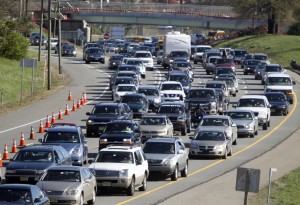Developing a National Market-Oriented Transportation Policy
The recent congressional elections and the Republican’s new majority in the Senate mark a good time to analyze U.S. transportation policy. The U.S. has not had a comprehensive transportation vision since the completion of the Interstate system in 1991. Although the three most recent six-year transportation acts, the Intermodal Surface Transportation Efficiency Act (ISTEA), the Transportation Efficiency Act for the 21st Century (TEA-21) and the Safe, Accountable, Flexible, Efficient, Transportation for Equity Act: A Legacy for Users (SAFETEA-LU) all spent increasing gas tax revenue on transit, non-motorized transit and active transportation, the most recent two-year bill Moving Ahead for Progress in the 21st Century (MAP-21) reversed that trend. With surface transportation policy set to expire in May, policymakers are threatening (promising) a new long-term bill. What aspects should a free market transportation policy on the national level contain?
First, only national systems should be funded. What is a national system? Generally, it is a transportation asset that is not naturally confined to one state. Interstate highways and other major roads that are part of the National Highway System and transport people and goods between various states are national assets. County highways and local streets that move people and goods between counties or cities are not. Class one railroads are national assets (most freight rail is private and does not need or want government funding and interference). Passenger rail that is commercially viable is also a candidate, but the only potential passenger rail line is the Northeast Corridor. Aviation, both passenger and freight, clearly fit the bill. While it has become sexy to fund transit and non-motorized transit from federal funds, both are locally oriented and should be funded at the state, regional, county or local level.
How would such a system be supported? The most economically efficient method is a user-pay/user-benefit system. For highways this means transitioning from a partial user-pay/user-benefit gas tax system (some of the money gets diverted to other uses) to a complete user-pay user-benefit mileage based user fee system. For aviation this means continuing the use of passenger facility charges (PFC) and allowing airports to set whatever PFC level is appropriate. For freight rail this means allowing freight rail lines to self-fund the system without government interference. And for passenger rail, this means only operating service in corridors which are commercially viable.
Next week we will examine transportation policy on a state level.
